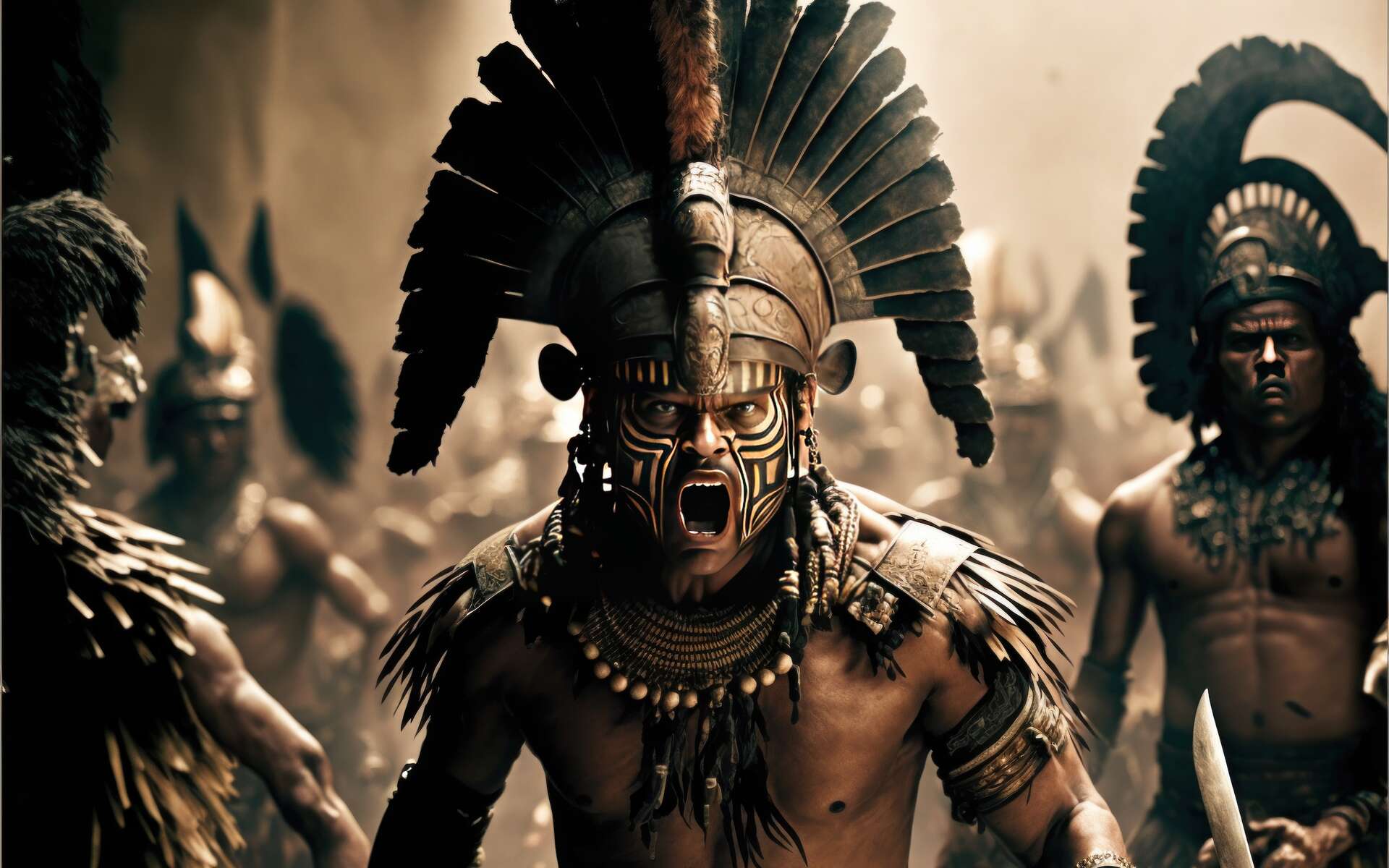
In 2015, when a wall of skulls was discovered at the site of Mexico-Tenochtitlan, the ancient capital of the Aztec Empire, research was able to make great strides concerning this particular architectural element. What is known as Huei Tzompantli, corresponds in archeology to a wooden palisade on which human skulls were pierced. But who was sacrificed and why? New hypotheses have been emerging since 2015 in this regard.
By discovering, in 2015, a skull wall on the site of the ancient Aztec capital, archaeologists were able to start working on it to try to understand the reasons for their presence. Before discovering real Huei Tzompantli in archaeology, as was the case here, we only knew of these impressive representations through illustrated codices and bas reliefs representing skulls. Thus, the discovery of a real skull wall was an opportunity on the one hand to attest to the practice, and on the other hand to look into it in research. A communication from archaeologist Raúl Barrera Rodríguez provides new clues.
A construction between 1486 and 1502
The Tzompantli, excavated from 2015, turned out to be a construction erected in several stages and of large size, both in height and in length. Within the multiple skulls found, skulls of young men, women, and children are present. What further questions about the presence of women and children within these particular walls. The presence of young men corroborates the hypothesis of the sacrifices of enemy warriors, it is a question of understanding why we find people of the opposite biological sex and much younger individuals.
Life as Food of the Gods
Very often, when Aztec society is mentioned to the general public, sacrificial practice is one of the characteristics of these peoples. It is a reality which is explained in the social and religious construction. The sacrifice is then a beneficial act for all the living in their relationship with the Gods to whom they are intended. Thanks to historical sources, we know that captive warriors were sacrificed by cardiectomy, in other words extraction of the heart, and their bodies thrown down the stairs of a pyramid. But the panel of killings in Aztec society differed depending on the sacrifices and the deities to whom they were addressed, and of course the myths. In Mexico-Tenochtitlan, the Templo Mayor area was dedicated to ritual practices. The sacrifice then served as a religious, calendar, but also political practice.
Why did we find women, if we sacrificed warriors?
Based on the textual sources, it is difficult to say that women were warriors in Aztec society, and therefore could be affiliated with captured and sacrificed male warriors. However, other elements may be taken into account. Indeed, in Aztec thought, where underworlds exist, two types of death are found in the same space: warriors who died in combat, and women who died in childbirth. Consequently, the way of dying defines in which stratum of the underworld the dead person will find himself according to his end of life. As for the presence of women warriors, if the latter are not explained, the possibility of seeing women in combat is not excluded, since accounts of combat against the Spanish colonists attest that women also took up arms to defend their cities. Women represent 38% of the skulls in the Huei Tzompantli of Mexico-Tenochtitlan.
A new hypothesis linked to a major myth
To explain the presence of women in the Huei Tzompantlithen considered as a construction that can symbolically represent a mythological episode, the fight between the sun god Huitzilopochtli and her moon sister Coyolxauhqui is considered. Therefore, the sun god Huitzilopochtli represented warrior values and his sister Coyolxauhqui also. If the two deities fought, it is simply because the goddess Coyolxauhqui believed his mother to be unfaithful the day the latter carried in her womb Huitzilopochtli. Furious, she then foments a trap with her other brothers to decapitate her. Of this assassination, the god Huitzilopochtli emerged from the belly and killed all his brothers and his sister thus making the sun emerge and the darkness disappear. THE Huei Tzompantli could be a representation of this founding myth of the Aztec people.
When other buildings of this type are discovered, research can then continue and corroborate the hypotheses. Or conversely, refute them.



GIPHY App Key not set. Please check settings